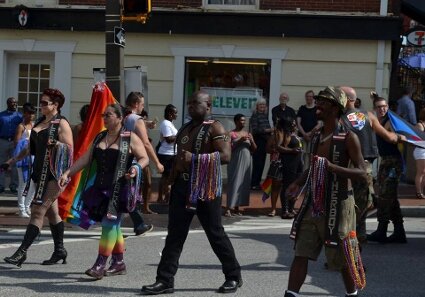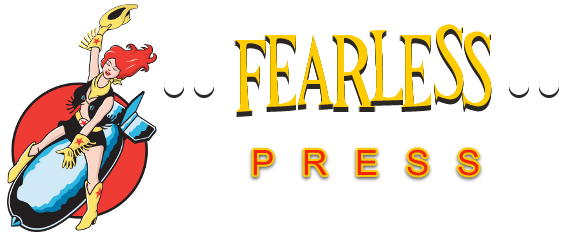 What do I want to say about me today? This is the question I often ask myself when I’m standing in front of my closet pondering what to wear. I’ll admit that sometimes this question is subconscious – like when I’m working from home and I choose to throw on comfy pajama pants and an old event tee – I’m saying, “I can’t be bothered to put on clothes with buttons.” Other times, it’s very deliberate – like when I’m getting dressed to walk in the Baltimore Pride Parade – I’m saying, “I’m comfortable in my body; I am strong; I do not have to fit into a mold to be a Leather Woman; I belong and I am Proud.” Is that too much to ask from my fashion choices?
What do I want to say about me today? This is the question I often ask myself when I’m standing in front of my closet pondering what to wear. I’ll admit that sometimes this question is subconscious – like when I’m working from home and I choose to throw on comfy pajama pants and an old event tee – I’m saying, “I can’t be bothered to put on clothes with buttons.” Other times, it’s very deliberate – like when I’m getting dressed to walk in the Baltimore Pride Parade – I’m saying, “I’m comfortable in my body; I am strong; I do not have to fit into a mold to be a Leather Woman; I belong and I am Proud.” Is that too much to ask from my fashion choices?
In many ways and on most days, my fashion choices are my own. I do not need or expect the general public to understand, appreciate or agree with myself expression. But as a representative of the Leather Community and an activist, I believe that I am a walking bill board. My message is expressed through my fashion choices. Are the attendee’s of the Pride Parade getting the right message? Are we even speaking the same language?
Whether you are making conscious decisions or not, fashion is a voice of society’s views about politics, sex, gender, religion, and power. Mainstream fashion trends change as a direct result of the changing ideals of a social group, or society at large, at a given time. Most of us follow along with the trends without making a connection between the trend and shifting social ideals. This year you should wear a long skirt. Miniskirts were so last season. We rarely stop to ask why.
Trends are seldom started by chance and they are never random. The 1970’s Punk movement, for example, started a fashion trend, in simple terms, by revolting against mainstream social values. The result was a cultural and fashion movement. Anyone who identified with this movement could show their support and acceptance by adopting the fashion style of the group. The Punk fashion trend was not out to sell denim jackets or help move Dr. Martens off the shelves. The result however clearly painted a picture of the times, the values of the social group and visibly communicated expectations for inclusion in the subculture. The outcome of which was a sustainable impact on the fashion industry.
Fashion designers who identify with this social group adopted the Punk street fashion in their designs and used the catwalk as a medium to express political and social views. Designers like Vivienne Westwood, Jean Paul Gaultier, Alexander McQueen, and Galliano explored sex, gender, politics, religion and subverting cultural ideals through their designs. The result is a direct line of influence to trendsetters, fashion houses, buyers and the mainstream population.
Take, for example, the connections between the post World War II bikers and the introduction of leather into main stream fashion by designers like Claude Montana in the 1980’s. While leather was quickly adapted by the gay community as a visible armor and clear symbol of belonging in a subculture, it was the interpretation of designers like Montana that carried the symbolism of leather to mainstream society. Now, not only did those who belonged to the sub culture understand the visual and tactile effect of leather, but so did those looking on from the outside. It is then that mainstream society can begin to understand the subculture and come to accept it. This stamp of approval gained through the appearance of leather on the catwalk made the leather community, for better or worse, less mysterious.
Now, not only can I find a leather skirt at Mr. S in San Francisco or Wilson’s Leather at the mall, but I can find it at H&M. Regardless of how we feel about this development in availability of the subculture’s styles, we need to understand the validation that the catwalk brings to these fashions.
As I prepared to walk in Baltimore Pride, I choose my armor; my symbols of inclusion into the Leather Community. And while the parade audience may not ever understand what leather means to me or how wearing it transforms me, we have – thanks to designers like Jean Paul Gaultier – lessened the communication gap. I am successful if, instead of treating me and those who I stood with as outcasts in the LGBT community, the majority of the audience looks at us and appreciates the roll that we play in the community and accepts our right to sexual freedom.
